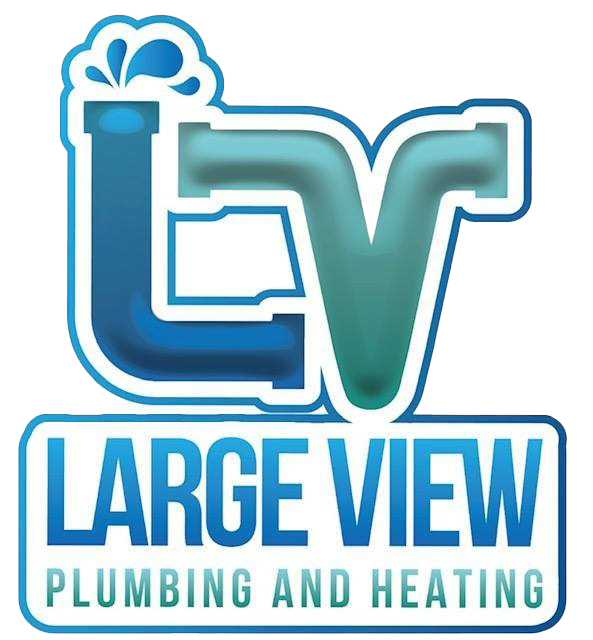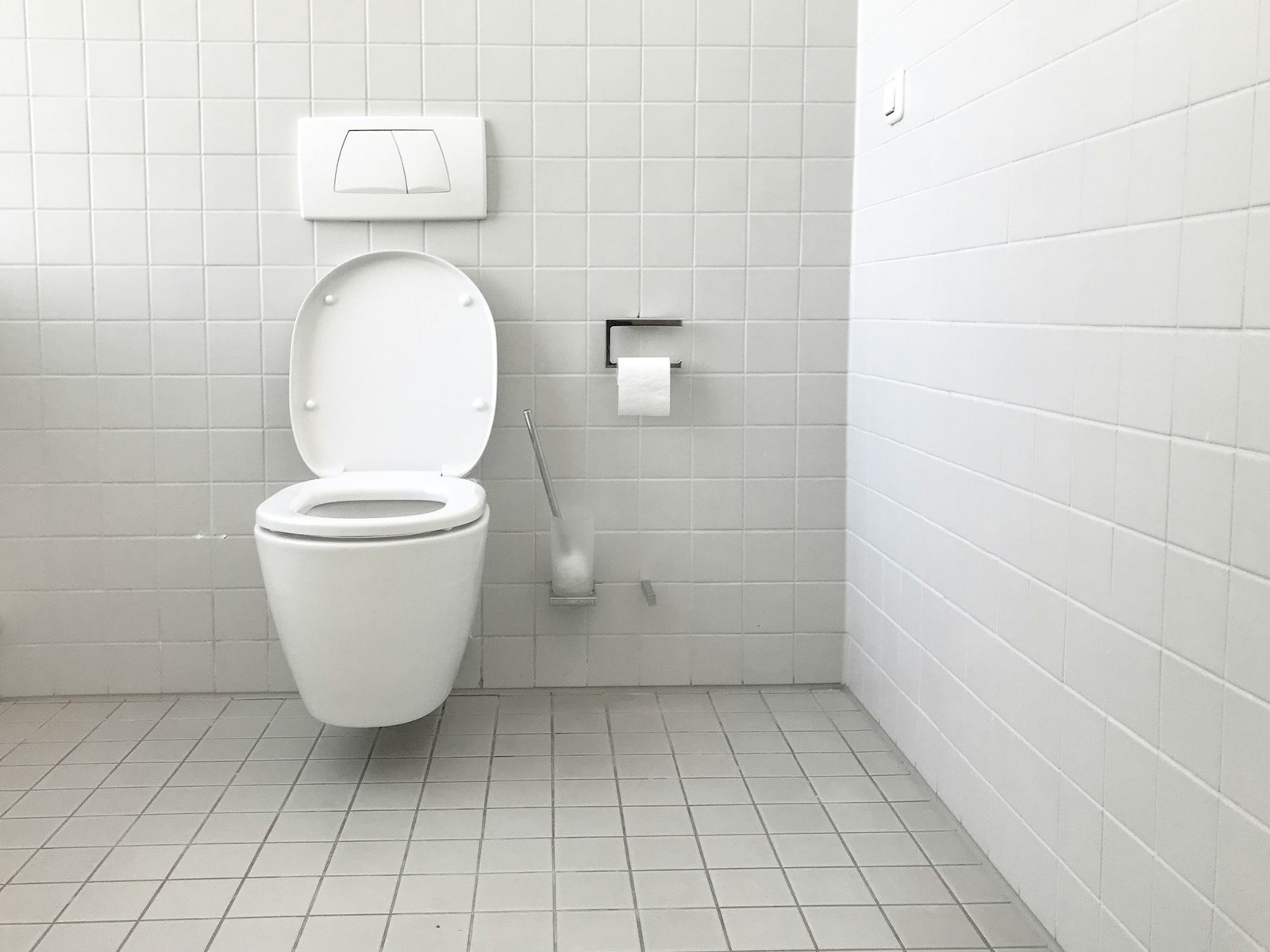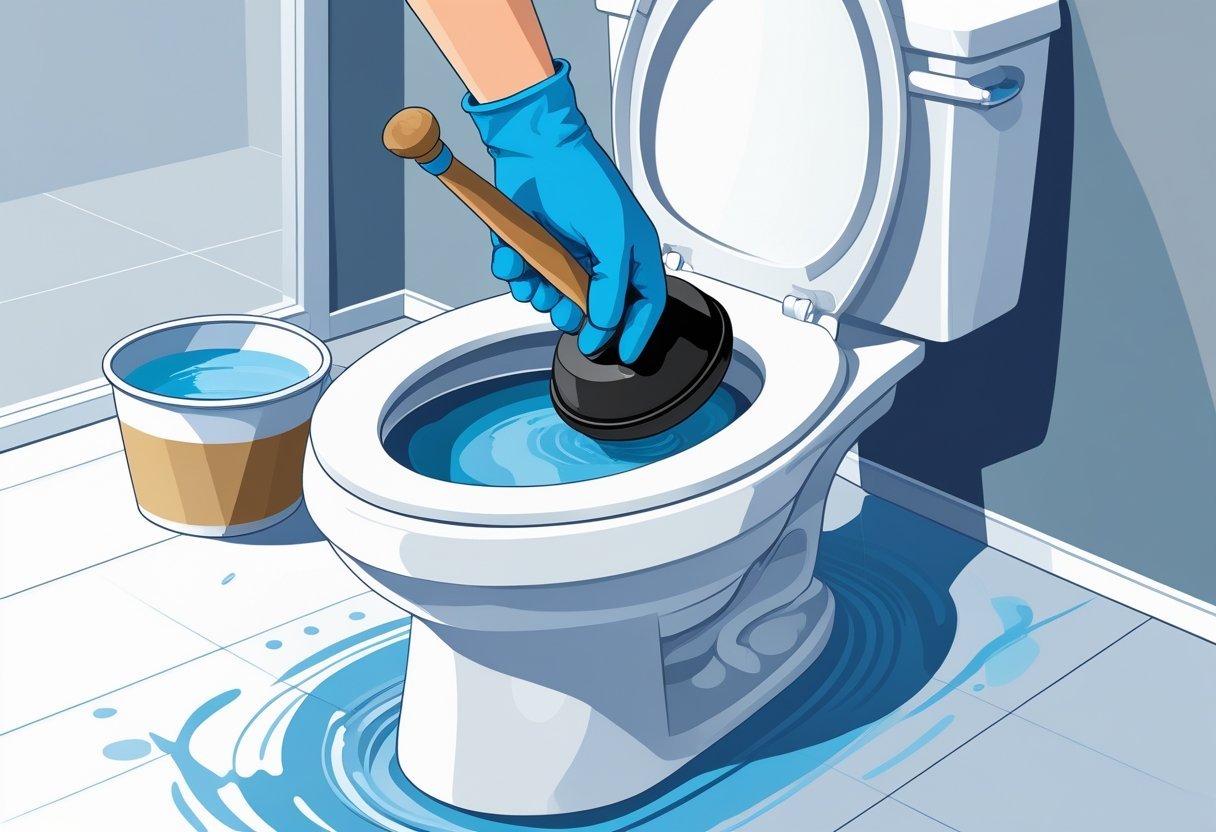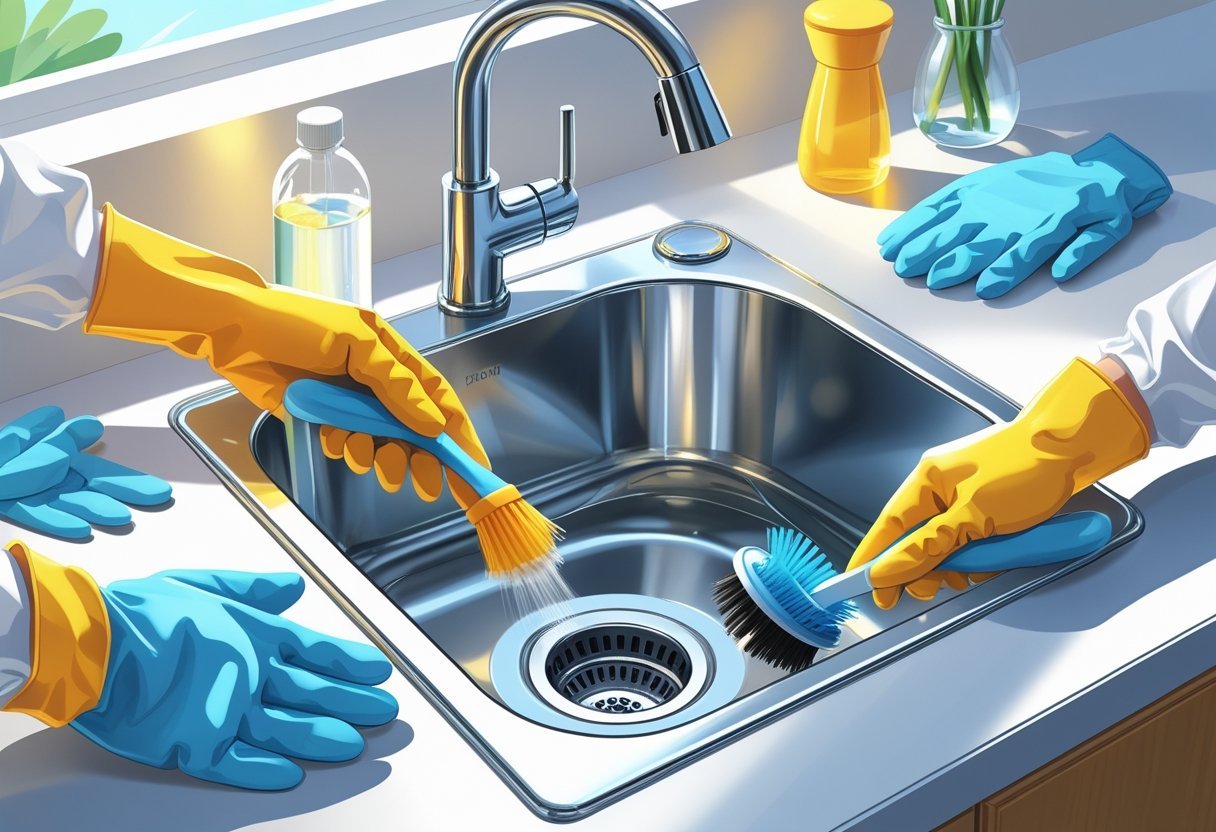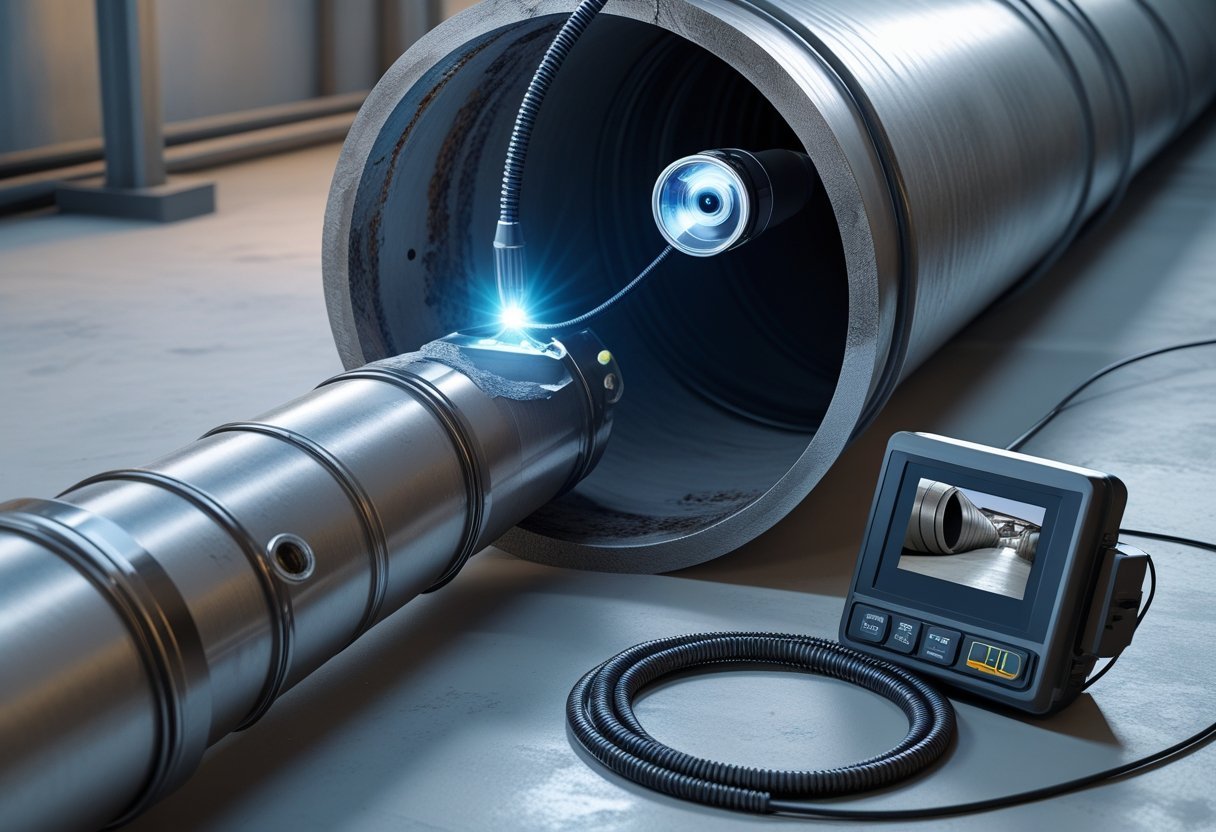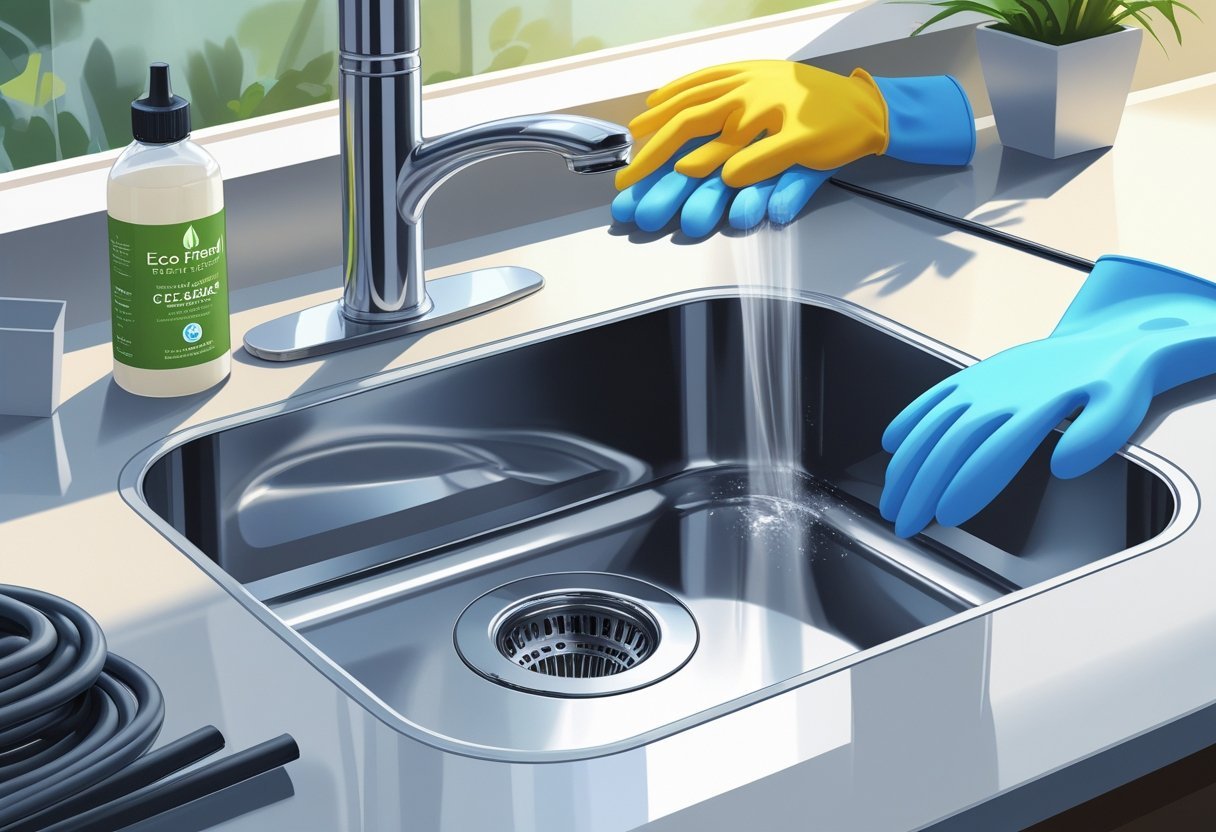Dealing with a clogged shower drain can disrupt your routine and cause frustration. To effectively unclog your shower drain, start by removing the drain cover and using tools like a barbed zip tie drain cleaner or a plunger. These options can help tackle common blockages before resorting to more complex methods.
If you find that the clog persists, consider using a mixture of vinegar and baking soda. This natural solution can break down buildup without harsh chemicals. For more persistent issues, the expertise of professionals like Large View Plumbing & Heating may be beneficial, ensuring a reliable and thorough approach to your plumbing concerns.
When faced with a clogged shower drain, understanding the causes—such as hair, soap residue, and debris—can lead to more effective prevention strategies. Remember, taking proactive steps can save you time and hassle in the long run.
Identifying Signs of a Clogged Shower Drain
Noticing early signs of a clogged shower drain can save you time and effort later. Pay attention to how water behaves and any unusual smells that may arise, as these indicators can help you address the issue promptly.
Slow Draining Water
If you find that water takes longer to drain from your shower, it is a clear indicator of a problem. This slow drainage often means your shower drain is starting to clog, leading to other issues if left unaddressed.
To assess the situation, watch for water pooling around the drain hole while you shower. If this becomes a routine occurrence, it’s essential to investigate further.
Sometimes, hair, soap scum, or other debris can accumulate in the pipes, restricting flow. Regular monitoring can help you catch these signs early. If you’re unsure how to proceed, consider reaching out to professionals like Large View Plumbing & Heating for expert advice.
Standing Water in the Shower
Standing water in your shower is an unmistakable sign of a clogged shower drain. If water remains stagnant after you finish showering, it’s time to take action.
Often, the blockage can occur near the drain hole, preventing water from moving through the pipes properly. Factors like accumulated hair, soap residue, and mineral buildup may contribute to the obstruction.
In some cases, a plunger might help dislodge minor blockages, but severe clogs may require a more thorough inspection. If you’re experiencing persistent standing water, consulting with professionals like Large View Plumbing & Heating can provide effective solutions tailored to your needs.
Unpleasant Odors
Unpleasant odors emanating from your shower drain can signal a blockage that requires immediate attention. This smell is often caused by trapped debris and stagnant water, leading to bacteria growth and odors.
If you notice a foul or musty scent, check for standing water or slow drainage at your shower drain. Left unchecked, these smells can permeate your bathroom, creating an uncomfortable environment.
Regular maintenance can significantly reduce these odors by keeping your shower drain clean. If odors persist despite your efforts, it may indicate a deeper clog or plumbing issue that professionals can help resolve.
Common Causes of Shower Drain Clogs
Understanding what leads to shower drain clogs can help you prevent them. Several common factors contribute to blockages, particularly hair and soap buildup, mineral deposits, and foreign objects.
Hair and Soap Buildup
Hair is one of the leading causes of clogs in shower drains. When you wash your hair, strands inevitably fall and combine with soap scum, creating a sticky mass that traps other debris. This buildup can constrict the flow in your drain line, leading to slow drainage or complete blockages.
To minimize hair clog formation, consider using a hair catcher or drain screen. Regularly removing hair can save you from the hassle of a clogged shower drain down the line.
Mineral Deposits
Hard water can lead to mineral deposits within your shower drain. When water evaporates, it leaves behind calcium and magnesium, which can gradually accumulate and restrict water flow. Over time, these deposits harden and create significant clogs.
To combat mineral buildup, you might want to use a descaling solution designed to break down these deposits. Regular maintenance can help keep your drain lines clear and prevent more serious plumbing issues.
Foreign Objects
Foreign objects accidentally dropped into the shower can also result in clogs. Common culprits include shampoo bottles, soap bars, or even small toys. If these items become lodged in the drain, they can quickly create a blockage.
Be mindful of what you bring into the shower. Implementing simple practices, such as keeping the shower area clear, can prevent foreign objects from becoming a drain issue.
For any stubborn clogs that persist, consider reaching out to professionals like Large View Plumbing & Heating. With their expertise, they can effectively address any challenges you face in maintaining a clear shower drain.
DIY Methods to Unclog a Shower Drain
Clogged shower drains can be a nuisance, and there are several effective DIY methods to resolve this issue. These methods utilize common household items and quick techniques that can clear most blockages without the need for harsh chemicals.
Hot Water Flush
A simple and effective way to start is with a hot water flush. Boiling water can help dissolve soap scum, hair, and other debris that may be causing the clog.
- Boil water: Start by bringing a kettle of water to a rolling boil.
- Carefully pour: Slowly pour the boiling water down the drain in stages. Allow it to sit for a few moments between pours to maximize its effect.
If your drain is still clogged after this, additional methods may be necessary. Repeat the boiling water process if needed, but always ensure it is safe for your plumbing.
Using Baking Soda and Vinegar
This method employs the foaming action of baking soda and vinegar, making it a natural alternative to chemical cleaners.
- Add baking soda: Start by pouring about ½ cup of baking soda down the drain.
- Follow with vinegar: Next, add 1 cup of vinegar. You’ll see the mixture fizz and foam. This reaction works to break down clogs.
- Let it sit: Allow the mixture to sit for approximately 30 minutes.
- Flush with hot water: Finish by flushing the drain with boiling water to clear any remaining debris.
This method is not only eco-friendly but also effective for regular maintenance. You can repeat this monthly to keep your drains clear.
Removing Visible Blockages
Sometimes, the issue is more straightforward. Removing visible blockages may be all that’s needed.
- Inspection: Start by checking the drain for any visible hair or debris. This can often be pulled out with your hand or a pair of tweezers.
- Use a drain snake: If the blockage is deeper, you can use a drain snake to reach it. Insert the snake into the drain and twist to grab onto the clog.
- Clean up: After removing any blockage, run hot water down the drain to ensure it’s clear.
For persistent issues, it may be worth consulting professionals like Large View Plumbing & Heating, who can provide expert assistance and keep your plumbing in optimal condition.
Tools and Products for Unclogging
When dealing with a clogged shower drain, having the right tools and products at your disposal is essential. This section covers effective techniques using a plunger, a manual drain snake, and even a coat hanger for those DIY moments.
Plunger Usage Techniques
Using a plunger effectively can help dislodge stubborn clogs. First, choose a high-quality cup plunger designed specifically for drains. Position the plunger over the drain to create a tight seal.
Apply quick, firm pressure, pushing down slowly and pulling up sharply. Repeat this motion about ten times before checking if the water starts to drain. If your shower has standing water, ensure it covers the plunger cup to create a better seal.
It’s important to consider that water displacement is crucial, so adjustments may be needed if the water level is too low. For persistent clogs, you may need to consult a professional like Large View Plumbing & Heating.
Manual Drain Snake Methods
A manual drain snake is a versatile tool for tackling clogs. First, insert the end of the snake into the drain until you feel resistance. Twist the handle to navigate through the pipes and break up the clog.
Keep in mind that different types of clogs may require different approaches. For hair clogs, you might need to angle the snake to catch the hair and pull it out.
After clearing the blockage, run hot water to flush the system. If you cannot resolve the issue, consider calling Large View Plumbing & Heating for more extensive repairs.
Coat Hanger as a DIY Tool
A coat hanger can serve as an effective DIY unclogging tool. Start by straightening one end of the hanger while leaving a small hook. Gently insert the hook into the drain to snag hair and debris.
Be cautious not to push the clog further down the pipe. This method is best for shallow clogs. Once you’ve pulled out material, run hot water to ensure everything is clear.
For more significant issues that a coat hanger can’t resolve, reach out to professionals who can provide expert solutions, like Large View Plumbing & Heating.
Chemical Drain Cleaners and Safety
While chemical drain cleaners can be effective for unclogging drains, they come with specific safety considerations. Understanding the types of drain cleaners available, how to use them safely, and their environmental impact is essential for anyone looking to resolve plumbing issues without causing harm.
Types of Drain Cleaners
There are several types of chemical drain cleaners, each designed to tackle different types of clogs. Common categories include:
- Caustic Cleaners: These contain sodium hydroxide or potassium hydroxide, which generate heat to dissolve organic matter.
- Acidic Cleaners: Often made with sulfuric acid, these are effective for mineral and soap scum clogs but can be very dangerous.
- Enzymatic Cleaners: These use bacteria or enzymes to digest organic material. They are safer for your plumbing and the environment but usually take longer to work.
It’s important to read the labels and find a product that is suitable for your specific clog type. For reliable drain cleaning services, consider reaching out to experts like Large View Plumbing & Heating.
How to Use Drano Safely
If you choose to use Drano or similar products, safety is paramount. Follow these steps:
- Read Instructions: Always read the label instructions carefully before use.
- Protect Yourself: Wear gloves and goggles to protect your skin and eyes from splashes.
- Ventilation: Ensure the area is well-ventilated to avoid inhaling fumes.
- Slow Pouring: Slowly pour the cleaner down the drain to minimize splashes.
- Wait Time: Allow the cleaner to sit for the recommended time, usually about 15-30 minutes.
- Flush with Water: After waiting, flush the drain with hot water to help clear the clog.
Remember, using excessive amounts can lead to dangerous chemical reactions. If you’re unsure or facing persistent clogs, contact Large View Plumbing & Heating for professional assistance.
Environmental Considerations
Chemical drain cleaners can pose risks to both human health and the environment. Here are key points to consider:
- Chemical Exposure: Many of these products contain harsh chemicals that can cause burns or respiratory issues if misused.
- Water Contamination: If disposed of improperly, they can seep into groundwater, polluting local water supplies.
- Pipe Damage: Frequent use can corrode pipes, leading to more severe plumbing issues in the future.
Consider using less harmful alternatives where possible. Enzymatic cleaners are environmentally friendly options, although they may take longer to work. Always consult with a professional like Large View Plumbing & Heating to identify the best solution for your plumbing needs while minimizing environmental impact.
Preventive Maintenance and When to Call a Professional
Regular maintenance can save you time and money in the long run. Understanding some basic cleaning tips and when to seek professional help is essential for keeping your shower drain functioning efficiently.
Routine Cleaning Tips
To maintain a clear shower drain, routine cleaning is important. Regularly remove visible hair and debris from the drain after each shower. Consider using a drain strainer to catch hair and soap scum before they enter the pipes.
A monthly cleaning using a mixture of baking soda and vinegar can also help. Pour half a cup of baking soda followed by half a cup of vinegar down the drain. Let it sit for about 30 minutes, then flush with boiling water. This natural solution effectively breaks down minor clogs and removes odors.
Establishing a routine will help prevent buildup and keep your plumbing in top shape. For more complicated issues, you may want to consult professionals like Large View Plumbing & Heating.
Upgrading Your Drain System
If you frequently encounter clogging issues, it may be time to upgrade your drain system. Old or poorly designed drain systems can lead to persistent problems. Consider installing larger pipes to improve water flow and reduce the risk of clogs.
Additionally, you might explore trenchless technology options for pipe rehabilitation. This modern method minimizes disruption during repairs and extends the life of your plumbing system.
Investing in quality materials and modern solutions can significantly enhance your home’s drainage efficiency. Large View Plumbing & Heating offers expert guidance on how to upgrade your drain system effectively.
Recognizing Plumbing Issues
Be aware of signs that indicate plumbing issues beyond simple clogs. Slow drainage, gurgling sounds, and unpleasant odors can signify a more serious problem within your plumbing system.
If you’ve attempted basic unclogging methods without success, it may be time to call in professionals. Ignoring these signs can lead to costly repairs down the line. Ensure your plumbing is handling water flow as it should to avoid further damage.
For reliable assistance, consider reaching out to Large View Plumbing & Heating, where a skilled team is ready to provide targeted solutions for your plumbing needs.
Frequently Asked Questions
If you’re facing a clogged shower drain, you likely have a few questions. This section addresses common methods and techniques to tackle clogs effectively.
What are natural methods for clearing a blocked shower drain?
You can use a mixture of vinegar and baking soda to clear a blocked shower drain. Pour one cup of baking soda followed by one cup of vinegar down the drain. Let it sit for about 30 minutes, then flush with hot water. Boiling water alone can also be effective, especially for breaking down soap scum and grease.
Can a plunger be effective in unclogging a shower drain, and how is it used?
Yes, a plunger can be effective. Ensure there’s some water in the shower to create a seal with the plunger cup. Position the plunger over the drain and push down firmly, then pull up sharply. Repeat this action several times to build pressure and potentially dislodge the clog.
What steps should be taken to remove hair clogs from a shower drain?
To remove hair clogs, you can first try using a wire hanger. Straighten the hanger, leaving a hook at one end. Carefully insert it into the drain to snag hair. Alternatively, try using a drain cleaning gel that dissolves hair. Follow with hot water to flush the drain.
How can one deal with a shower drain that won’t unscrew when it’s clogged?
If the drain cover is stuck, you can try using a pair of pliers to grip and turn it. If that doesn’t work, apply some penetrating oil around the screws and let it sit for a few minutes. This can help loosen rust or debris that may be holding it in place.
What is the best way to remove standing water in a clogged shower?
Begin by using a bucket or cup to remove as much standing water as possible. If there is still water left, you can use a wet/dry vacuum to suck it out. Once the water is removed, you’ll have better access to address the clog.
Is using a drain snake an effective solution for unclogging a shower, and what’s the proper technique?
Using a drain snake can be very effective. Insert the snake into the drain until you feel resistance. Rotate the handle to break up or grab the clog. Carefully pull the snake out, and remove any debris that clings to it. This might require a few attempts for stubborn clogs.
For comprehensive plumbing solutions, consider consulting with experts like Large View Plumbing & Heating. Their experienced team can assist with any drainage issues effectively.
